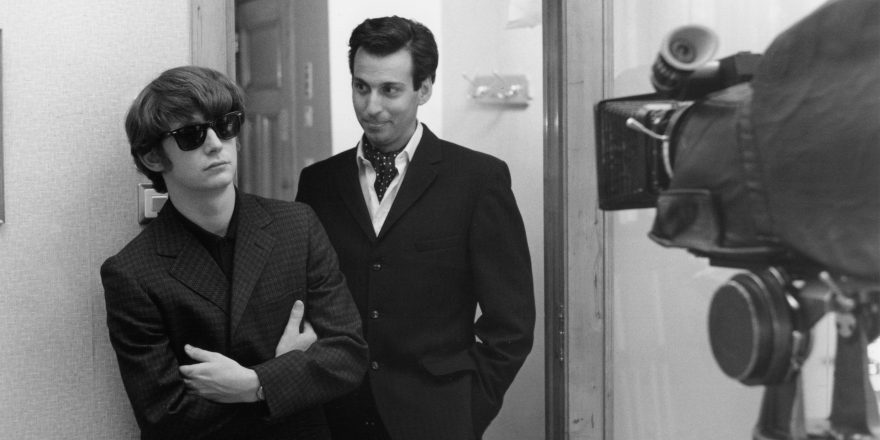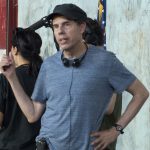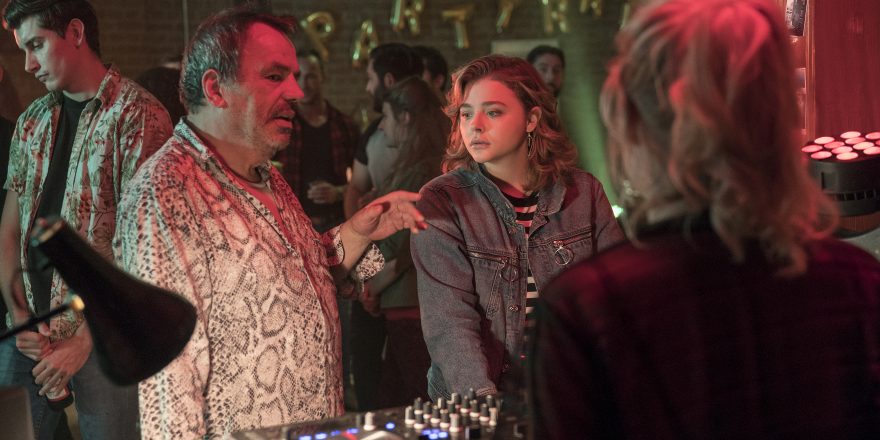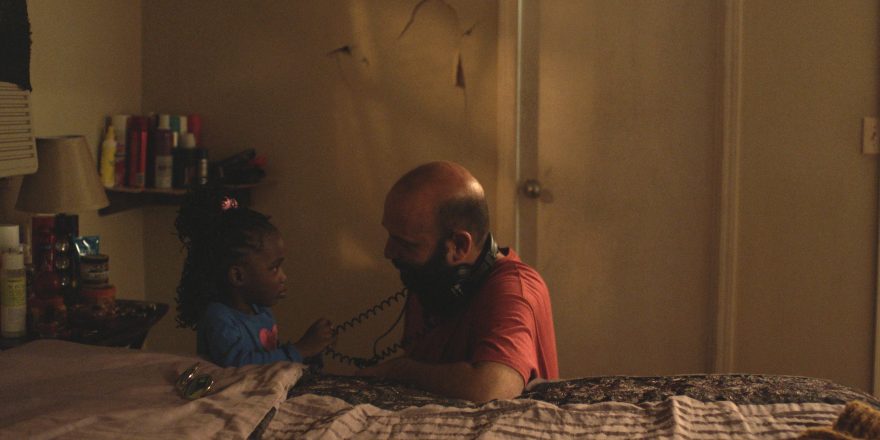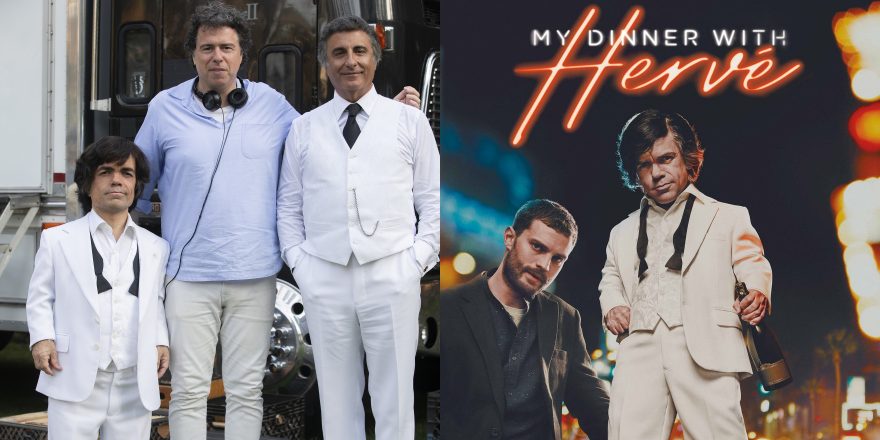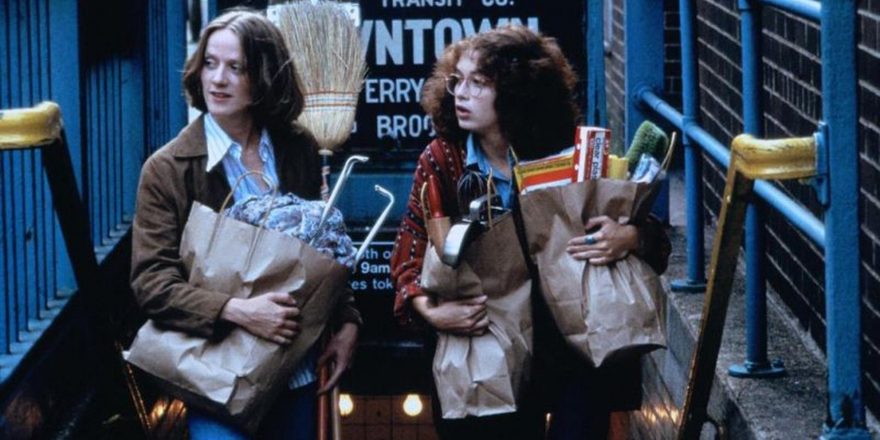The restoration and re-release of my debut feature, The Hours and Times (above), has given me the occasion to consider that film in the context of my subsequent work, and in particular to consider why I am drawn to speculative or alternative histories.
The Hours and Times deals with a small episode in the lives of two beloved and complex rock music figures, John Lennon and Beatles manager Brian Epstein. Their 1963 holiday in Spain was written about in several Beatles biographies and became the subject of speculation and myth. In late 1987 and early 1988, when I wrote and decided to make the film, I had spent most of my years since high school working on two abortive features, neither of which (thankfully, in retrospect) saw the light of day. On the heels of that student-level work, The Hours and Times seemed like a compact story I had a chance of realizing competently within the small budget ($15-20,000) I was able to muster, thanks to a small legacy from departed family and a sympathetic film lab. It also covered psychological territory to which, at that time in my mid-20s, I apparently felt some affinity.
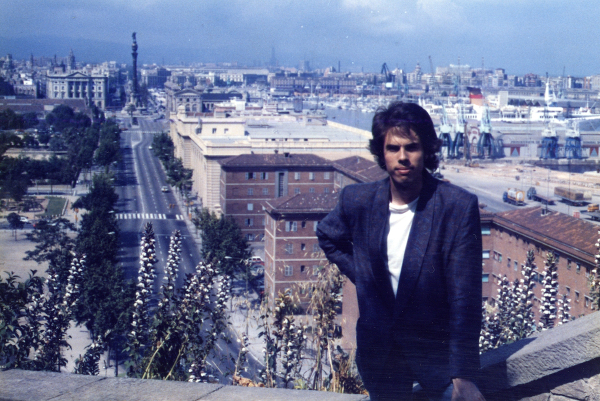
Looking back on the DIY nature of the production, painful as it was at times, I can appreciate how it equipped me for more ambitious, later work — all of which, for better or worse, has remained grassroots, very low-budget and largely DIY. It was thanks to the immense talents of the film’s two actors, Ian Hart and David Angus, that we were able to shoot in roughly the length of time that Epstein and Lennon’s actual holiday probably took – about four days over a long weekend. (The splendid Barcelona hotel in which we filmed, the Avenida Palace, whose manager was extremely kind to us, was a favorite stop of the Beatles and other jetsetters during the swinging sixties.) Our crew consisted of one herculean helper, Juan Carlos Valls, who worked for the camera rental house and kindly brought his three lights to the shoot. (This was, of course, before the digital revolution, when it was far less common to shoot a 35mm dramatic film under such downscaled conditions.) After completing a couple of more days of filming in London, I returned to California and supported myself and the film by working as a legal word processor over the more than two years it took to edit. Why it took that long I have no idea, other than learning on the job and the usual practicalities of working in one’s spare time, barely having the money to buy splicing tape or rent a Moviola. Turns out the long edit worked in its favor, inasmuch as in 1991 the film’s completion coincided with that of several others that came to be known as New Queer Cinema. This boosted its visibility.
When the film was released in 1992, after premiering at Toronto, Sundance, Berlin and New Directors, its warm reception was a huge and unexpected gift in launching my career. Given the film’s problematic 58-minute length, its distribution wound up being as much a DIY effort as its production, spearheaded by James Schamus and Sande Zeig (already legends in the New York independent world), via the burgeoning company Good Machine which James had founded with Ted Hope in 1990. James and Ted were the finest mentors I could ever have hoped for, and I’ll always be grateful for their models of integrity and resourcefulness. Without them and the several superb journalists who took every opportunity to champion the film, it might never have gotten past the obstacle of its length and lack of advertising budget. I’ll also forever be grateful to the festival programmers who gave the film its initial exposure; it was, daresay, an era in which it was easier for a first-time effort such as this, without stars, to find a place at the big festivals, indeed to find any sort of commercial distribution. The word “arthouse” had not yet become pejorative.
—-//—-
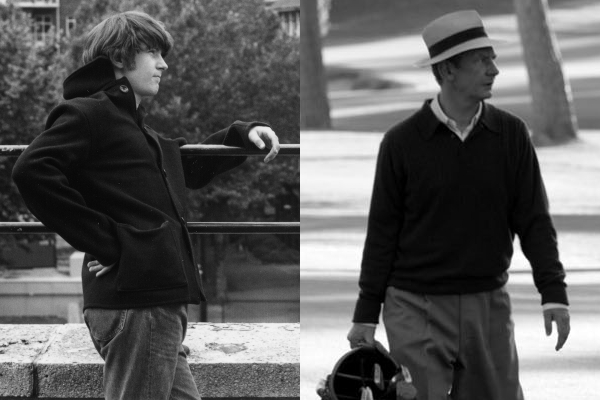
For the past six years, I have been living and breathing The 11th Green, a drama starring Campbell Scott and Agnes Bruckner that embraces the mythology surrounding President Eisenhower’s long-alleged involvement in extraterrestrial events. (Ian Hart turns in a crucial performance, not as rock star but as principled cold warrior James Forrestal, whose 1949 suicide is speculated to have been related to his intention to accelerate the disclosure of extraterrestrial events involving the U.S. military.) An historical lacuna has once again given me a compelling architecture for a film. How did this come about? Did my lack of formal education make me more of a lifelong history student? Surely. Did I have a pre-existing interest in UFOlogy or so-called “exopolitics”? Surely not. Was the extensive, immersive research that the subject necessitated an excuse, concurrently, to refine my plan to execute the film and confront the various layers of problem-solving that I knew the production would eventually entail? Certainly the latter has proven to be the case with two previous features.
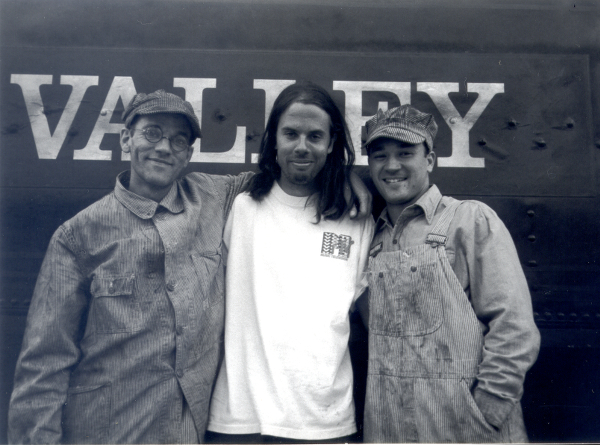
Color of a Brisk and Leaping Day was based on a true story I had read as a youngster, about a failed attempt at the end of World War II to save a doomed but very scenic railroad to Yosemite Valley, in California. Unlike that of The Hours and Times, the premise of the film was contrary to how I knew that history had played out. Instead, I imposed on history what I was sure the outcome could have been, should have been. Along the way, the challenges of orchestrating location filming in three states, some of it quite remote, the marshaling of steam locomotives and other railroad artifacts, and seamlessly integrating rare studio footage from the ’40s — all on a minuscule budget with a crew of six — brought all of us a degree of satisfaction, a sense that nothing was impossible, which might have been absent with better funding. It may be a cliché to say so, but what the picture lacked in material resources it more than made up for in love. And, of course, that goes for every picture I’ve had the privilege of making.
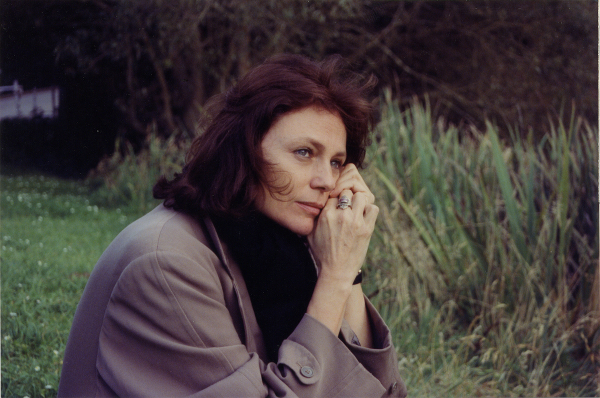
The Sleepy Time Gal drew on a more personal history. It imagined part of my own mother’s early history about which I knew nothing — other than what I had read in her letters after her death — during her early years as a Florida radio disc jockey who gave up a daughter for adoption at birth. This premise allowed me to create out of whole cloth the character of my unknown half-sister, who, as a successful adult, is searching for her mother even as her mother searches for her, both unsuccessfully, as fate would have it. It was a more complex type of storytelling, with events tied together emotionally and associatively over time and distance, rather than by way of a linear narrative. Though shooting was drawn out over the course of three years (owing, predictably, to a lack of money), what an enormous gift that was. In the hands of two exceptional actresses (Jacqueline Bisset and Martha Plimpton) who couldn’t have been more different in background and temperament, it felt like a master class in directing, while our producer Ruth Charny provided yet another stalwart example of how skill, intelligence, and integrity could be applied to realizing a “difficult” film no company wanted to make. More than anything, perhaps, The Sleepy Time Gal allowed me to observe the editor’s art practiced at a very high level by Dody Dorn and Annette Davey in shaping uneven, often unwieldy footage. That education has proved invaluable ever since.
—-//—-
The use of speculative history as a departure point, as in The Hours and Times, is something that expanded outward and laterally for me. It did not lead to movies that were commercially successful. It may have given me a reputation that has kept me from getting jobs making movies that are commercially successful. But what I can say is that it has provided a means to refine how I say what I say. That probably is more important to me than anything right now, feeling as if I have immersed myself in the material sufficiently to be able to convey something of value with … well, an aspect of reliability.

How one says what one says couldn’t be a more important consideration in dealing with the subject matter of The 11th Green, in light of the degree to which UFOs and the extraterrestrial hypothesis have been alternately marginalized and sensationalized in the media. It is a vast subject that cannot, and should not, be relegated to fantasy or fear-based conspiracy scenarios. Thanks to lessons learned from my earlier films, beginning with The Hours and Times, I believe The 11th Green offers an equanimity that keeps it from going off the deep end, while being a reliable distillation of an untold history that deserves to be told.



